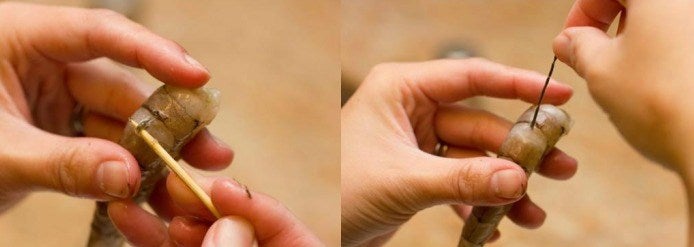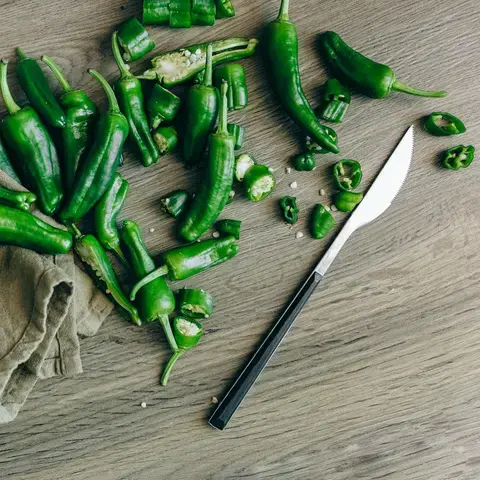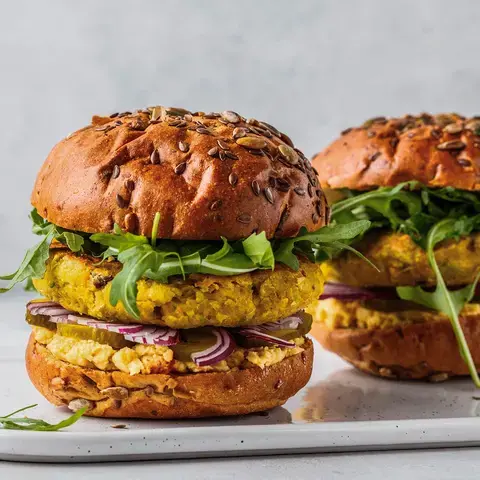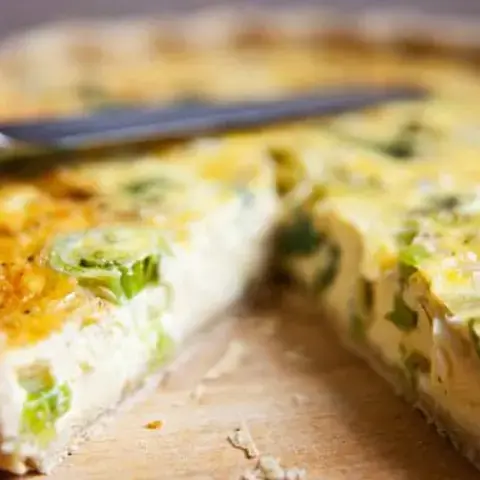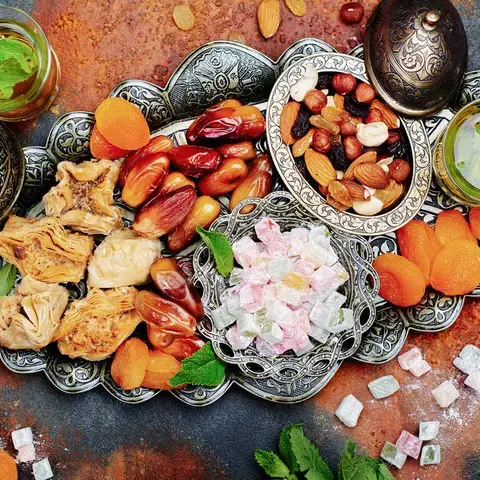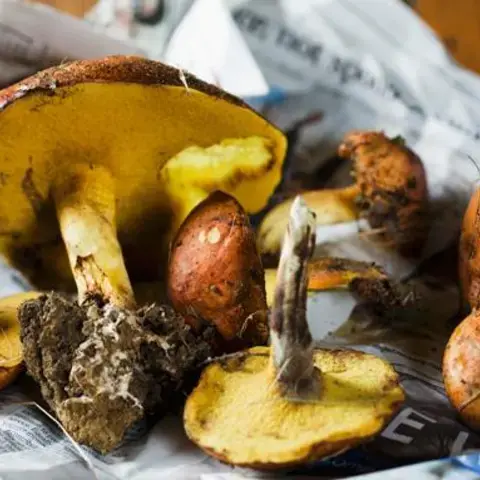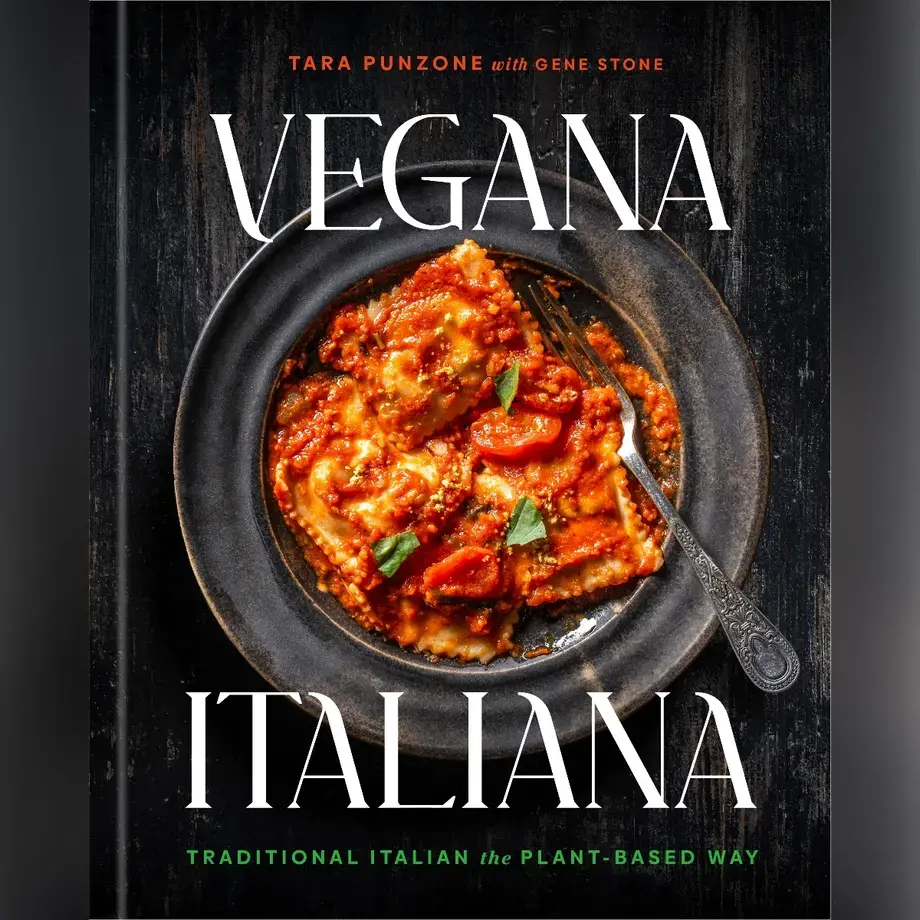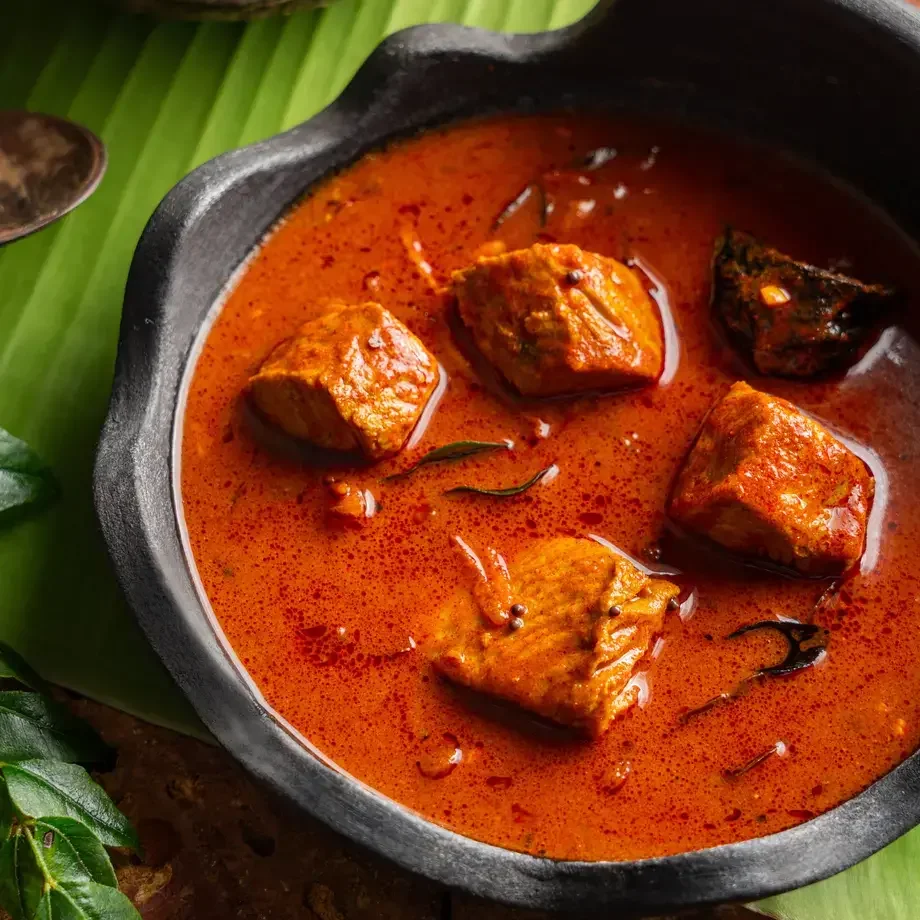Namiko Chen/Just One Cookbook
What do the Japanese do differently than most people? After deveining shrimp, they wash shrimp in potato starch. It sounded like a very intriguing method and we just had to learn more. Here's what Chen explained on her blog:
"In Japanese cooking, we usually clean shrimp with potato starch by rubbing together. The potato starch absorbs the smell and dirty particles from shrimp very well. You will see how dirty the starch becomes when you’re rinsing the shrimp. Check the difference between one rinsed with potato starch and one without. You’ll be surprised!"
So what are the steps for deveining shrimp?
As shown in the video, to devein your shrimp, you need to:
- Peel the shrimp. Start by taking off the head, then remove the rest of the outer shell.
- Use a skewer take out the shrimp’s vein, which runs along its back. Some people cut open the shrimp’s entire back to remove the vein, but the skewer method keeps the succulent shrimp more intact. Stick the skewer into the shrimp sideways, down from the head and a half a centimetre below what you can imagine would be its spine, if it had one. Lift upward to pull the vein up and out. If it breaks, you may need to repeat the step lower down on the shrimp’s body.
- Clean with potato or cornstarch.
Why Do You Need to Remove the Vein?
Deveining shrimp is not an absolutely mandatory step, and any bacteria inside its digestive tract was likely killed during the cooking process. That said, the little black string is probably full of grit and keeping it in will make your shrimp eating experience a little, well, sandier. It’s also a question of aesthetics: diners will probably find the deveined shrimp looks more appetising.
Take a look and learn how to devein and clean shrimp so you can prepare these tasty shrimp recipes.

